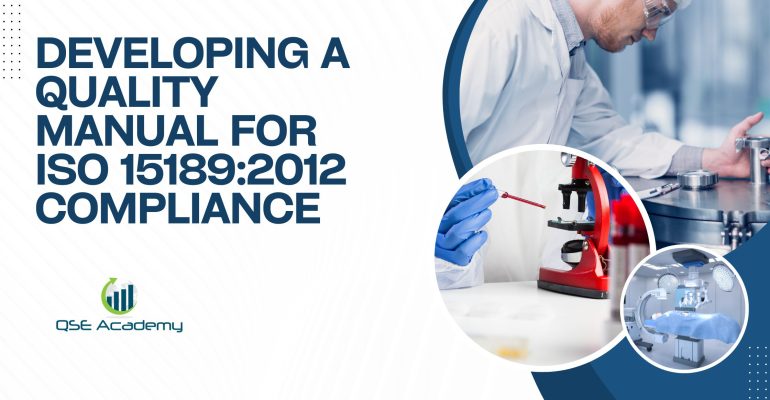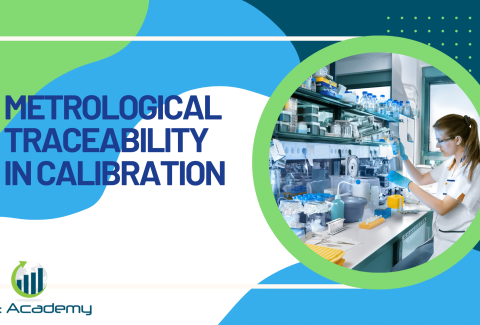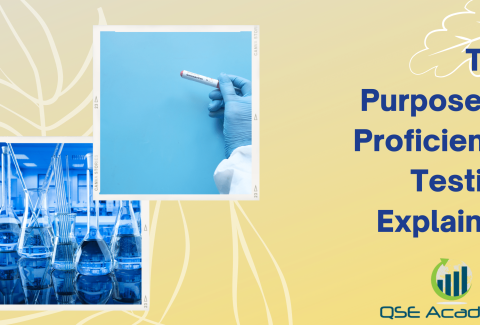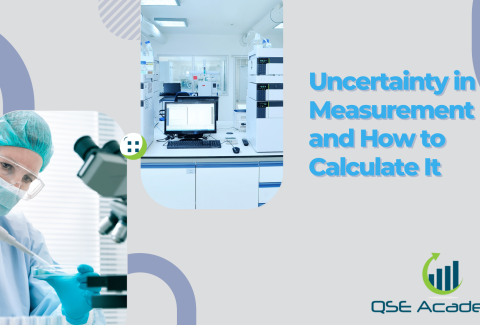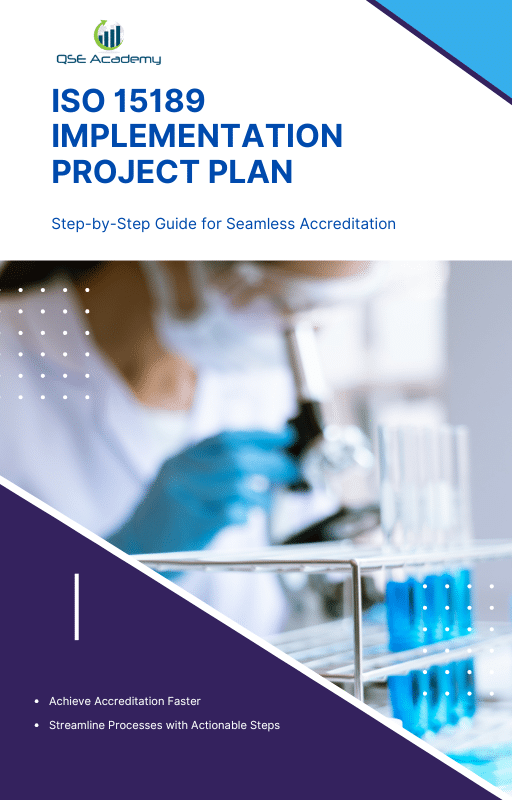Developing a Quality Manual for ISO 15189:2012 Compliance
Crafting the cornerstone of laboratory excellence begins with adherence to internationally recognized standards. ISO 15189:2012, specific to medical laboratories, demands a comprehensive Quality Manual to ensure consistent high-quality processes and services. The journey to compliance is complex, but a well-constructed manual serves as both compass and map.
Understanding the intricacies of a Quality Manual is critical for laboratories aiming to meet ISO 15189:2012 standards. This document is not just a requirement—it is the embodiment of a laboratory’s commitment to quality. It is through the alignment of policies and procedures with international benchmarks that a lab demonstrates its capability and reliability.
In the following sections, we delve into the nuances of creating a Quality Manual that not only meets the stringent requirements of ISO 15189:2012 but also fosters an environment of excellence. From the manual’s purpose and core elements to continuous improvement and risk management, this guide lays out the essential steps for laboratories to achieve and maintain their compliance and quality goals.
Introduction
ISO 15189:2012 is a crucial standard specifically designed for medical laboratories. It sets rigorous benchmarks for quality and competence, focusing on the consistent and reliable delivery of accurate test results, which are vital in patient care. The standard encompasses management requirements akin to ISO 9001 and particular technical requisites for the medical environment.
A Quality Manual, as per ISO 15189:2012, is the keystone document in a laboratory’s quality management system. It encapsulates the policies and processes that guide laboratory activities to ensure quality and compliance. The Quality Manual is key for laboratories to identify opportunities for improvement and maintain their commitment to excellence.
The standard has undergone several revisions, with the latest being ISO 15189:2022. The evolution of the standard has seen the introduction of elements such as an emphasis on risk management and requirements for managing environmental conditions that may affect outcomes.
|
ISO 15189 Edition |
Year |
|---|---|
|
Previous edition |
2007 |
|
Current edition |
2012 |
ISO 15189:2012’s systematic approach to laboratory management and its detailed attention to managing system documentation, control of documents, and internal audit bring about the reliability and accuracy essential for patient sample analysis, from primary samples to acceptance testing. This accreditation process thus provides both direction and confidence for medical laboratories worldwide.
Understanding the Purpose and Scope of a Quality Manual
The Quality Manual is a fundamental document in establishing a robust quality management system for medical laboratories. It serves several critical functions that are essential for the laboratory’s operations and compliance with ISO 15189:2012 standards. Primarily, it ensures consistency and reliability in the myriad of laboratory activities, from primary samples to care testing. This document demonstrates the laboratory’s commitment to meeting the requirements for quality and management systems as outlined by ISO 15189:2012, providing a clear reference for accreditation bodies during the accreditation process.
Furthermore, the Quality Manual is an indispensable tool for laboratories to conduct both internal audits and management reviews, highlighting opportunities for improvement and emphasizing risk management. These processes are crucial to maintaining and enhancing the laboratory’s quality management systems, meeting the demands of the management requirements, and contributing to continuous enhancement of service quality.
The scope of the Quality Manual extends to defining the specific range of laboratory’s activities, including requirements for sample collection, testing, calibration laboratories, and environmental conditions. It outlines organizational structure, delineates responsibilities, and establishes the quality management system’s boundaries. This clarity supports the laboratory management in ensuring that all relevant management system documents are comprehensive and tailored to support laboratory procedures and patient care.
Core Components of the Quality Manual
The development of a comprehensive quality manual is critical for medical laboratories seeking accreditation under ISO 15189:2012. It serves as a cornerstone document, outlining the laboratory’s commitment to quality and continuous improvement.
Organizational Structure Central to the manual is a clear depiction of the organizational structure. An organizational chart displays the governance system, delineating roles, responsibilities, and the management hierarchy. Key personnel are identified, ensuring clarity in operational and decision-making processes.
Quality Management System (QMS) The manual also elaborates on the establishment and upkeep of the QMS. This encompasses management system documents, necessary for showcasing compliance with ISO 15189 requirements. Documentation practices within the QMS cover the entire life cycle of records, from creation to disposal, emphasizing the laboratory’s adherence to stringent record-keeping protocols.
Document Control To ensure the relevancy and accuracy of the management system documents, the manual details document control procedures. It includes guidelines for version control, document distribution, and the retention and disposal of documents, all critical to maintaining the integrity of laboratory activities.
Management of Impartiality Finally, the manual addresses policies that uphold impartiality. It specifies measures to handle conflicts of interest and includes a systematic approach to monitor and review these measures, ensuring unbiased laboratory results and the integrity of laboratory activities.
Detailed Procedures and Processes
Pre-Examination Processes: Ensuring patient identification accuracy and proper sample collection is paramount. This includes rigorous protocols for the handling, transportation, and storage of samples to maintain their integrity. Pre-examination processes must specify conditions surrounding environmental controls to ensure samples are not compromised.
|
Pre-Examination Key Elements |
Description |
|---|---|
|
Patient Identification |
Accurate recording of patient details. |
|
Sample Collection |
Procedures conforming to requirements for sample collection. |
|
Sample Handling and Storage |
Maintaining environmental conditions during transit and storage. |
Examination Processes: Medical laboratories are required to adhere to standardized testing procedures. Each examination method must undergo thorough validation and verification to meet the ISO 15189:2012 standards, ensuring reliability and accuracy of laboratory activities.
|
Examination Key Elements |
Description |
|---|---|
|
Testing Procedures |
Standardized methods following the management system documents. |
|
Method Validation/Verification |
Quality management systems oversight of examination validity. |
Post-Examination Processes: Reporting results with precision is vital. Laboratories must establish a systematic approach for the interpretation and clinical correlation of results to ensure meaningful conclusions for patient care.
|
Post-Examination Key Elements |
Description |
|---|---|
|
Result Reporting |
Timely and accurate dissemination of findings. |
|
Interpretation |
Clinical correlation and interpretation adhering to management requirements. |
Equipment Management: ISO 15189:2012 emphasizes rigorous equipment management. This entails regular maintenance, calibration, and both acceptance testing as well as ongoing validation and verification, to uphold quality throughout laboratory activities.
|
Equipment Management Key Elements |
Description |
|---|---|
|
Maintenance and Calibration |
Scheduled procedures for the upkeep and precision of equipment. |
|
Equipment Validation/Verification |
Ensuring performance meets the necessary standards for testing. |
Quality Assurance and Continuous Improvement
Quality Assurance and Continuous Improvement are pivotal in maintaining the integrity of medical laboratory activities. Adherence to ISO 15189:2012 underlines the commitment of a laboratory to these principles, ensuring that patient care testing adheres to the highest standards of quality.
Internal Audits:
- Continuous improvement within medical laboratories requires regular internal audits.
- Planning and executing these audits allow labs to review conformity with both management requirements and technical aspects of laboratory activities.
- Addressing any non-conformity that is identified ensures compliance with requirements for quality and provides opportunities for improvement.
Management Reviews:
- Management reviews serve as a central component, enabling laboratory management to monitor and evaluate the relevance, adequacy, and effectiveness of the quality management system (QMS).
- Outcomes from these reviews are essential, as they inform decisions related to quality improvement and resource allocation.
Handling Non-Conformities:
- It is crucial for laboratories to have a structured process for identifying, documenting, and addressing non-conformities.
- Corrective and preventive actions are integral to mitigating any issues, thereby reinforcing the emphasis on risk management inherent in the ISO 15189:2022 standards.
Customer Feedback and Complaints Management:
- The ISO standard emphasizes the importance of collecting customer feedback and efficiently managing complaints.
- Managing feedback and complaints is not only about resolution but also about learning from these instances to prevent recurrence, enhancing the laboratory’s quality management systems.
Medical laboratories adopting a proactive approach to these four areas demonstrate a strong commitment to quality improvement and uphold the rigorous standards expected by ISO 15189 accreditation bodies.
Training and Competence
ISO 15189:2012 outlines stringent requirements for personnel competence and training in medical laboratories. It mandates that laboratory personnel possess the necessary education, training, and experience to perform their tasks effectively. Additionally, the standard calls for ongoing assessments of competence and continuous professional development to ensure high-quality laboratory activities and reliable results.
Training programs are a pivotal part of meeting ISO 15189:2012 requirements for quality and competence. The development and implementation of robust training strategies are crucial for the maintenance of laboratory standards. These programs must be regularly monitored and evaluated to determine their effectiveness. This evaluation ensures that the personnel are not only competent upon initial assessment but continue to develop the skills and knowledge necessary to address the complexities of modern laboratory management and the various management system documents they encounter.
|
Key Element |
Description |
|---|---|
|
Training Needs |
Identifying and updating training requirements. |
|
Training Material |
Developing and using appropriate training resources. |
|
Competence Assessment |
Regular evaluation of personnel competences. |
|
Continuous Development |
Facilitating ongoing professional development. |
|
Effectiveness Review |
Periodic reviews of the training program’s success. |
By fulfilling these requirements, laboratories enhance their quality management systems, fostering opportunities for improvement and fortifying their commitment to the care and safety of patients.
Safety and Risk Management
Laboratory Safety Policies: Ensuring the safety of personnel and the environment is paramount in any medical laboratory. ISO 15189:2012 underlines this by setting forth requirements for the establishment of robust health and safety protocols to be adhered to diligently. Laboratories must be proactive in emergency preparedness and response, ensuring that all staff are trained to handle unforeseen incidents effectively.
Risk Management: Risk management is an essential facet of laboratory operations, given the direct connection to patient care. ISO 15189:2012 emphasizes the identification and assessment of potential risks in the laboratory’s processes. This proactive stance requires laboratories to develop and implement effective risk mitigation strategies, ranging from simple procedural adjustments to comprehensive overhauls in laboratory management and activities. Emphasis on risk management also expands into the environmental conditions under which laboratory activities are carried out, calling for routine monitoring and controlling these variables to prevent any adverse implications on test results and patient safety.
|
Laboratory Safety Measures |
Risk Management Steps |
|---|---|
|
1. Development of emergency protocols |
1. Identification of potential risks |
|
2. Regular staff training on safety protocols |
2. Risk assessment across laboratory procedures |
|
3. Implementation of health and safety checks |
3. Development of risk mitigation strategies |
• Develop and document thorough health and safety protocols. • Prioritize staff training on emergency preparedness. • Continuously review and adjust risk mitigation strategies.
Best Practices for Developing and Maintaining the Quality Manual
When embarking on the journey of developing and maintaining a Quality Manual in alignment with ISO 15189:2012, it’s essential to adopt a structured and methodical approach. Best practices for crafting and updating this pivotal document include:
Developing the Quality Manual:
- Engage key stakeholders from the outset, fostering ownership and ensuring that the Quality Manual reflects a comprehensive understanding of laboratory activities.
- Utilize templates and checklists to streamline the process, guaranteeing that you cover all requirements for quality and management systems stipulated by ISO 15189:2012.
- Strive for a clear, accessible manual to facilitate understanding and adherence, essential for effective quality management.
Maintaining the Quality Manual:
- Establish a regular review and update schedule, accommodating ongoing changes in standards and incorporating opportunities for improvement.
- Train laboratory staff on the contents of the manual and any revisions, ensuring consistent application of policies and practices.
Leveraging Technology:
- Deploy advanced document management systems to maintain, secure, and control the Quality Manual.
- Digital accessibility with proper security measures is critical, as is automated version control, facilitating efficient distribution and adherence to management system documentation requirements.
Case Studies and Examples
ISO 15189:2012 is crucial for medical and calibration laboratories seeking to establish quality management systems that meet international standards. With an emphasis on risk management and consistent laboratory activities, this standard provides a framework for setting up a Quality Manual that details management system requirements and ensures high-quality care testing along with other laboratory processes.
Case Study 1: Clinical Laboratory A clinical laboratory streamlined its ISO 15189:2012 Quality Manual development by systematically identifying opportunities for improvement. Throughout the process, the internal audit function played a critical role in addressing management requirements and management system documents. Challenges included adapting to new environmental conditions and ensuring effective control of documents. Solutions like frequent training and mock accreditation assessments were implemented. As a result, the laborary showcased a robust quality management system leading to improved patient outcomes and confidence among accreditation bodies.
Case 2: Research Laboratory In striving for ISO 15189:2012 compliance, a research laboratory faced different challenges, primarily related to the standard’s management system requirements and expectations for quality management. Deploying a thorough management review cycle, the laboratory addressed the requirements for risk management. Key solutions included a redefined protocol for the handling of primary samples, stressing acceptance testing, and calibration. The overhaul spurred a better-structured process for laboratory activities, significant in fostering a culture of continual improvement and fulfilling the stringent laboratory management criteria for the accreditation process.
Note: Each case study adheres to a coherent integration of ISO 15189:2012 standards with laboratory operational procedures, showcasing the significance of a well-devised Quality Manual.
Conclusion
In developing a Quality Manual adhering to ISO 15189:2012 standards, medical laboratories engage in a foundational process that solidifies their commitment to upholding the highest management and technical requirements for quality and competence. Such a document not only serves as a blueprint for laboratory activities but also demonstrates compliance with internationally recognized benchmarks for excellence in healthcare testing. Key components include a focus on management requirements, the implementation of robust quality management systems, and maintaining appropriate environmental conditions.
The Quality Manual plays a pivotal role in laboratories’ Quality Management Systems. It is instrumental in navigating the accreditation process with its comprehensive mapping of procedures and policies, emphasis on risk mind-management, and establishment of protocols for the control of documents and responsiveness to opportunities for improvement.
Looking ahead, enhancements in ISO 15189 will likely keep pace with technological advancements and evolving care testing methodologies. Medical laboratories must remain adaptable, ensuring their quality manuals are living documents, reflective of dynamic laboratory environments and expectations. Continuous updates to management system documentation, the integration of more sophisticated risk management requirements, and the critical evaluation through internal audits and management reviews will remain at the helm of laboratory quality advancement.
With these elements in focus, laboratories can ensure sustained compliance with ISO 15189 and foster continuous improvement in service quality and patient safety.
References
For comprehensive understanding and effective development of a Quality Manual in accordance with ISO 15189:2012, referencing authoritative sources and industry standards is essential. Key documents include:
- ISO 15389:2012 Medical laboratories — Particular requirements for quality and competence. This standard provides a detailed framework for quality management systems and the management of laboratory activities.
- Guidance for the preparation of a quality manual issued by the respective accreditation bodies. They often provide specific guidelines to tailor the Quality Manual to meet the accreditation process requirements.
- ISO 9001:2015 Quality management systems — Requirements. While specific to medical laboratories, ISO 15189:2012 informs its framework from ISO 9001, focusing on quality management principles.
- ILAC G18:2004 Guideline for the Formulation of Scopes of Accreditation for Laboratories. Understanding the scope of accreditation is crucial in developing a Quality Manual.
- CLSI GP26-A4 for a Quality Management System which offers a model for laboratory quality improvement, including the emphasis on risk management and processes related to patient samples.
For those developing or updating a Quality Manual, consulting current literature, including industry publications, white papers, and management system documents specific to the field of medical laboratory management, is invaluable. It’s advisable to regularly review updates from international and national accreditation bodies, as they provide insights on evolving standards and opportunities for improvement.
Further Reading:
- World Health Organization (WHO): Laboratory Quality Management System Handbook.
- Clinical and Laboratory Standards Institute (CLSI) documents for standard operating procedures in medical laboratories.
- Professional bodies such as the American Society for Clinical Pathology (ASCP) for resources on laboratory management requirements.
Appendix
The development of a quality manual compliant with ISO 15189:2012 standards is a pivotal step for medical laboratories to ensure excellence and consistency in laboratory activities. When developing a quality manual, laboratories should incorporate various management system documents that align with the requirements for quality and management systems delineated by the standard.
To facilitate the process, laboratories can take advantage of templates and checklists that guide the creation of a Quality Manual. These tools help to outline the necessary components such as opportunities for improvement, internal audit procedures, risk management strategies, and requirements for quality management systems.
Furthermore, laboratories seeking ISO 15189:2022 accreditation may benefit from links to training and certification programs that provide comprehensive understanding of the management system requirements, including the emphasis on risk management, environmental conditions affecting laboratories, control of documents, and management review procedures.
Below is a table of essential resources for laboratories developing their ISO 15189:2012 Quality Manual:
|
Resource |
Description |
|---|---|
|
Templates |
Pre-formatted structures for Quality Manual creation. |
|
Checklists |
Detailed items to be covered in the Quality Manual. |
|
Training Programs |
Educational resources for staff to understand ISO 15189:2012 requirements. |
|
Certification Programs |
Programs designed to validate an individual’s or organization’s knowledge regarding laboratory management requirements. |
By utilizing these resources, laboratories can ensure that they address all elements of quality management, maintain comprehensive management system documentation, and meet the stringent requirements of accreditation bodies.
Looking for More Resources on ISO 15189?
If you found this article helpful, explore our premium resources designed to help you achieve ISO 15189 certification efficiently:
- 📦 Complete Documentation Package for ISO/IEC 15189 2022: Get all the essential templates and documents you need for fast, easy implementation.
- 🎓 Online Course on ISO/IEC 15189 2022 : Enroll in our comprehensive training to master the key concepts and practical steps toward certification.
- 📋 ISO/IEC 15189 2022 Checklist: Download our detailed checklist to ensure you’ve covered every step of the process.
These resources are tailored to meet your needs and ensure a smooth certification journey. Explore them today and get one step closer to success!

